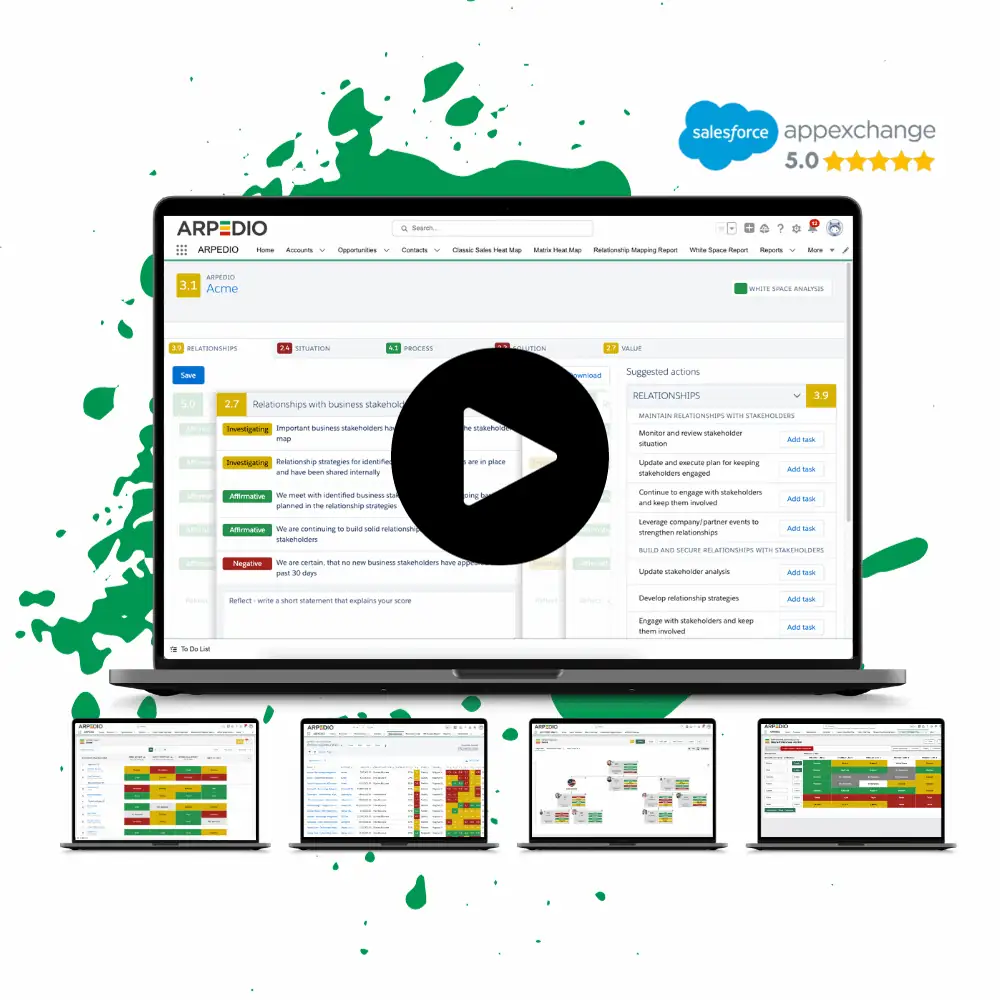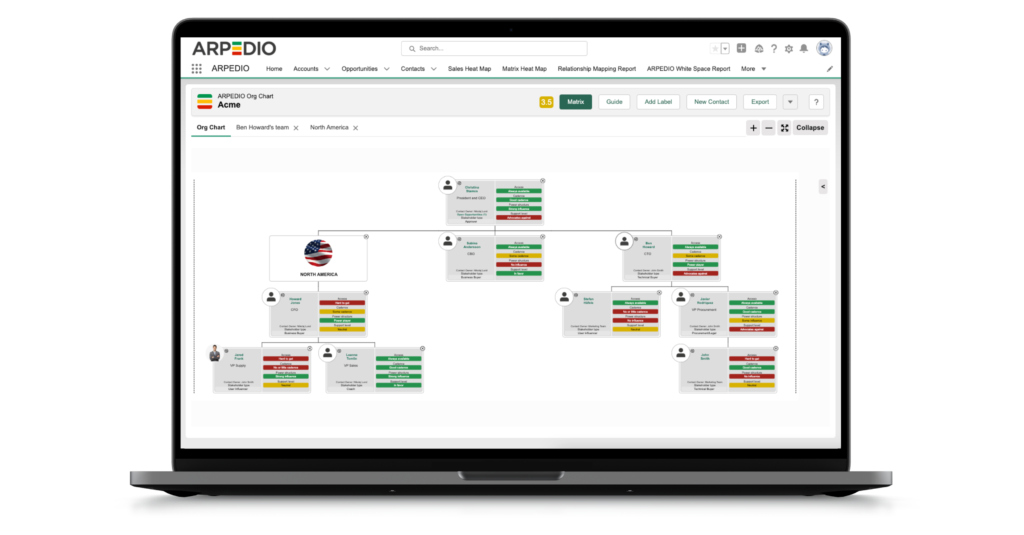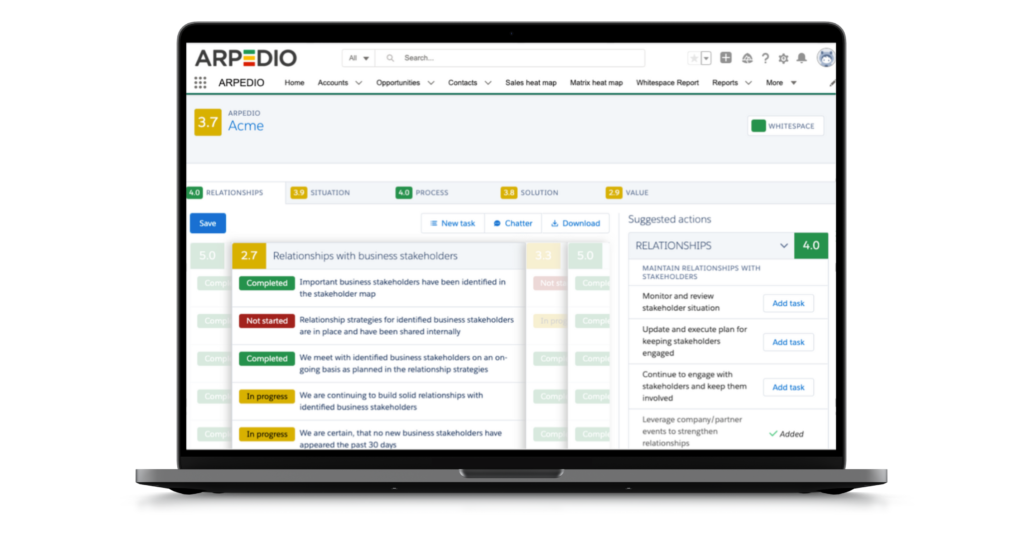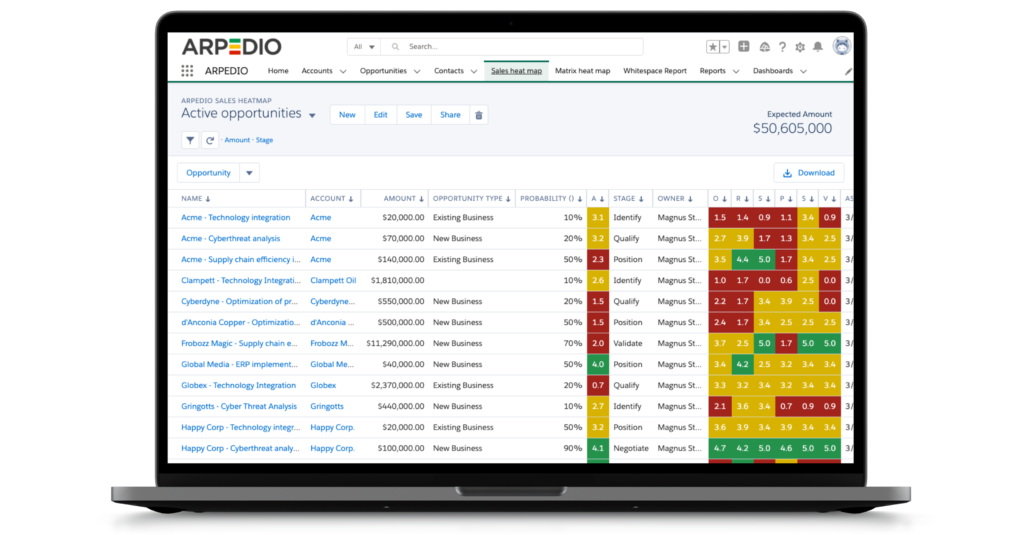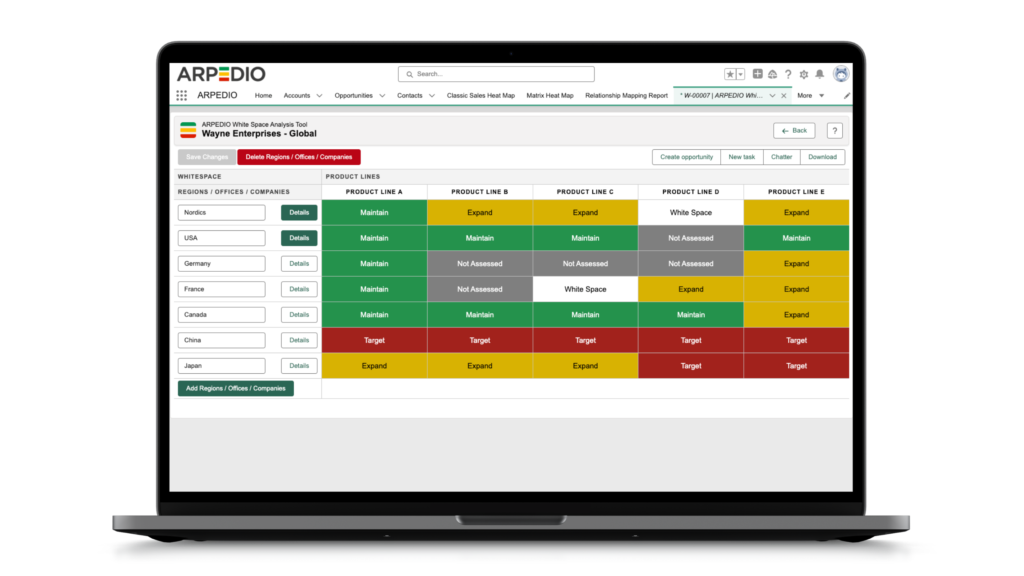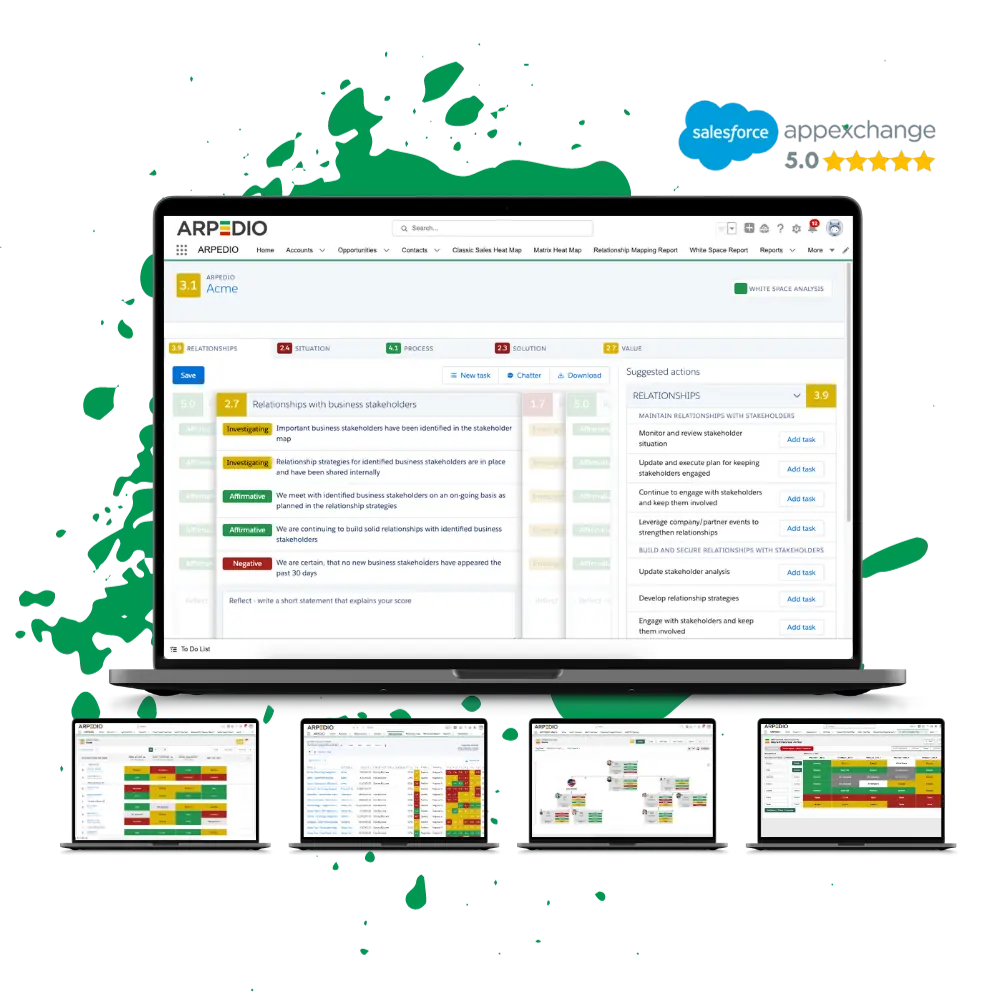Account-based selling (ABS) is becoming increasingly popular in the B2B software industry as it allows businesses to target specific high-value accounts and personalize their marketing and sales efforts. But how can you measure the success of your account-based selling campaigns? By tracking key metrics and analytics, you can assess the effectiveness of your ABS strategy and optimize your efforts for better results. In this article, we will explore eight important metrics that can help you measure the success of your account-based selling.
Table of Contents
Total Available Market (TAM)
One of the key metrics for measuring the success of account-based selling is the Total Available Market (TAM). TAM helps you understand the purchasing power of your targeted market segment and gives you insights into potential customers for your solution. By knowing your TAM, you can determine your current market share, set growth targets, and identify how many accounts you need to engage through ABS to deliver sufficient leads to sales. Tracking TAM allows you to validate your revenue goals and assess the market potential for your ABS strategy.
Why is TAM important for measuring account-based selling success?
Understanding your Total Available Market is crucial for evaluating the success of your account-based selling campaigns. Here’s why:
- Market Share: TAM helps you assess your current market share and provides a benchmark for measuring growth.
- Growth Targets: By knowing your TAM, you can set realistic growth targets for your ABS strategy.
- Account Engagement: Tracking TAM allows you to identify the number of accounts you need to engage to generate sufficient leads for sales.
- Market Potential: TAM provides insights into the market potential for your ABS strategy, helping you make data-driven decisions.
By understanding and tracking your Total Available Market, you can effectively measure and optimize the success of your account-based selling campaigns.
Ideal Customer Profile (ICP)
Defining an Ideal Customer Profile (ICP) is crucial for evaluating the performance of your account-based selling strategy. The ICP encompasses firmographic, environmental, and behavioral attributes of accounts that are expected to become your most valuable customers. By targeting accounts that align with your ICP, you can improve the effectiveness of your account-based selling campaigns and increase the likelihood of converting leads into customers.
Evaluating your success in reaching and engaging accounts that match your ICP is an important metric for measuring the effectiveness of your account-based selling. By tracking the number of accounts that fit your ICP criteria and analyzing their level of engagement, you can gauge how well your ABS strategy is resonating with your ideal customers. This information allows you to make data-driven decisions and fine-tune your approach to ensure you are focusing your efforts on the most promising accounts.
Key Components of an Ideal Customer Profile
An ideal customer profile typically includes the following key components:
- Firmographic attributes: These include characteristics such as industry, company size, revenue, location, and organizational structure.
- Environmental attributes: These encompass factors such as market trends, competitive landscape, and regulatory environment that may impact the buying behavior of potential customers.
- Behavioral attributes: These involve understanding the specific pain points, challenges, and goals of your target accounts, as well as their preferred communication channels and decision-making processes.
By carefully defining and refining your ICP, you can ensure that your account-based selling efforts are focused on the right accounts and increase the likelihood of driving meaningful business outcomes.
Account Engagement Score
Measuring the engagement of your target accounts is a crucial step in evaluating the success of your account-based selling (ABS) strategy. The account engagement score provides valuable insights into the level of interaction and interest that your target accounts have with your brand and content. By tracking key metrics such as website visits, email opens, content downloads, and social media interactions, you can effectively assess how well your ABS strategy is engaging your target accounts.
The account engagement score helps you understand the effectiveness of your ABS campaigns in capturing the attention and interest of your target accounts. A higher engagement score indicates a more successful ABS campaign, as it signifies that your accounts are actively engaging with your brand and consuming your content. This level of engagement is a strong indicator of the potential conversion of leads into customers, as engaged accounts are more likely to be receptive to your sales efforts and open to exploring your offerings.
To calculate the account engagement score, you can assign weights to different engagement activities based on their level of importance to your ABS strategy. For example, you may assign higher weights to activities such as requesting a demo or contacting a sales representative, as they indicate stronger intent and interest. By combining these weighted metrics, you can derive an overall engagement score for each target account, allowing you to easily compare and prioritize accounts based on their level of engagement.
| Metric | Weight |
|---|---|
| Website Visits | 3 |
| Email Opens | 2 |
| Content Downloads | 4 |
| Social Media Interactions | 1 |
Benefits of Tracking Account Engagement Score
- Identify highly engaged accounts: The account engagement score helps you identify accounts that are actively engaging with your brand and content. These accounts are more likely to convert into customers and should be prioritized in your ABS strategy.
- Optimize marketing and sales efforts: By tracking the account engagement score, you can gain insights into the effectiveness of your marketing and sales efforts. This information allows you to optimize your strategy by focusing on activities and channels that drive higher engagement.
- Personalize your approach: A higher account engagement score indicates a deeper level of interest and engagement from the target account. By understanding the specific activities that contribute to the score, you can personalize your approach and tailor your messaging to resonate with the interests and needs of each account.
Conversion Rate (Win Rate)
| Metrics | Definition |
|---|---|
| Conversion Rate (Win Rate) | The percentage of marketing-generated leads that become sales-qualified leads and eventually convert into customers. |
When it comes to measuring the effectiveness of your account-based selling, the conversion rate plays a crucial role. This metric allows you to evaluate how effectively your ABS strategy generates leads that result in closed-won deals. A higher conversion rate indicates a more successful account-based selling campaign.
To calculate the conversion rate, you need to track the number of leads that enter your sales funnel and the number of those leads that ultimately convert into customers. By comparing these numbers, you can determine the percentage of leads that successfully move through each stage of your ABS pipeline.
Monitoring the conversion rate can provide valuable insights into the effectiveness of your marketing and sales efforts. If you notice a low conversion rate, it may indicate that your targeting is not accurate, your messaging needs improvement, or your lead nurturing process requires optimization. On the other hand, a high conversion rate suggests that your account-based selling strategy is effectively engaging and converting leads, leading to greater revenue generation.
Customer Lifetime Value (CLV)
When it comes to measuring the success of your account-based selling strategy, one key metric to consider is the Customer Lifetime Value (CLV). The CLV measures the total amount of revenue a customer generates throughout their entire relationship with your company. By focusing your ABS campaigns on customers with a high CLV, you can drive long-term revenue growth and maximize the effectiveness of your strategy.
Calculating the CLV of your target accounts allows you to assess the overall success of your account-based selling and identify areas where you can improve customer lifetime value. This metric takes into account factors such as repeat purchases, upsells, and cross-sells, giving you a comprehensive understanding of the value each customer brings to your business.
By tracking and analyzing the CLV of your target accounts over time, you can make data-driven decisions to optimize your ABS campaigns and ensure that your efforts are focused on the most valuable customers. This metric provides valuable insights into the return on investment (ROI) of your account-based selling strategy and helps you prioritize your resources for maximum impact.
Key Metrics for Measuring Account-Based Selling Success
Measuring the success of your account-based selling strategy requires evaluating a range of key metrics. In addition to the CLV, other important metrics to consider include the Total Available Market (TAM), Ideal Customer Profile (ICP), Account Engagement Score, and Conversion Rate (Win Rate). These metrics provide a holistic view of your ABS performance and help you fine-tune your strategy for optimal results.
By leveraging these metrics, you can gain valuable insights into the effectiveness of your account-based selling campaigns, identify areas for improvement, and make data-driven decisions to drive better results. Remember, measuring the success of your ABS efforts is an ongoing process that requires regular tracking and analysis to ensure continuous optimization.
Conclusion
Measuring the success of account-based selling is crucial for optimizing your ABS strategy and driving better results. By tracking metrics such as total available market, ideal customer profile, account engagement score, conversion rate, customer lifetime value, and more, you can assess the effectiveness of your ABS campaigns and make data-driven decisions.
However, it is important to note that measuring the success of account-based selling can come with challenges. Accurately tracking and analyzing data can be complex, especially when dealing with a large number of target accounts and multiple touchpoints. Ensuring data integrity and consistency across different systems and platforms is critical for obtaining accurate insights.
Additionally, aligning sales and marketing teams to collaborate effectively and share data can be a challenge. Clear communication and a cohesive strategy are necessary to ensure that both teams are working towards the same goals and leveraging the same set of metrics to measure success.
Despite these challenges, by addressing them and consistently measuring your account-based selling efforts, you can maximize the ROI of your ABS strategy and achieve better revenue management. Continuous improvement and adaptation based on data insights will empower your organization to drive growth and success through account-based selling.
FAQ
How can I measure the success of my account-based selling campaigns?
By tracking key metrics and analytics, you can assess the effectiveness of your ABS strategy and optimize your efforts for better results.
What is Total Available Market (TAM) and why is it important to measure?
TAM helps you understand the purchasing power of your targeted market segment and gives you insights into potential customers for your solution. Tracking TAM allows you to validate your revenue goals and assess the market potential for your ABS strategy.
Why is defining an Ideal Customer Profile (ICP) important for account-based selling?
By targeting accounts that fit your ICP, you can improve the effectiveness of your ABS campaigns and increase the likelihood of converting leads into customers.
How can I measure the engagement of my target accounts?
By tracking metrics such as website visits, email opens, content downloads, and social media interactions, you can assess how effectively your ABS strategy is engaging your target accounts.
What is the conversion rate and why is it important to measure?
The conversion rate calculates the percentage of marketing-generated leads that become sales-qualified leads and eventually convert into customers. Tracking the conversion rate of your ABS campaigns helps evaluate how effectively your strategy generates leads that result in closed-won deals.
How is Customer Lifetime Value (CLV) measured and why is it important?
CLV measures the total amount of revenue a customer generates throughout their entire relationship with your company. Focusing your ABS campaigns on customers with high CLV can drive long-term revenue growth.
Why is it important to measure the success of account-based selling?
Measuring the success of account-based selling is crucial for optimizing your ABS strategy and driving better results. By consistently measuring your account-based selling efforts, you can maximize the ROI of your ABS strategy and achieve better revenue management.

